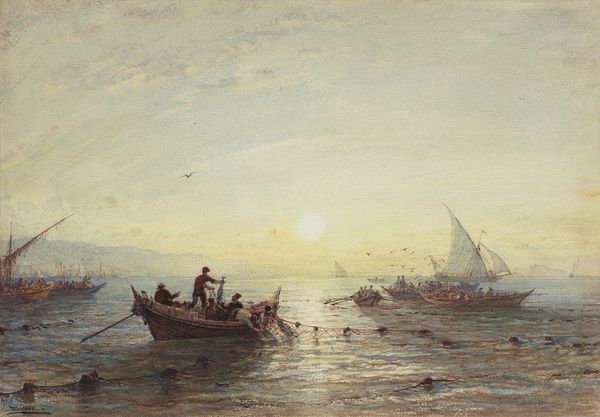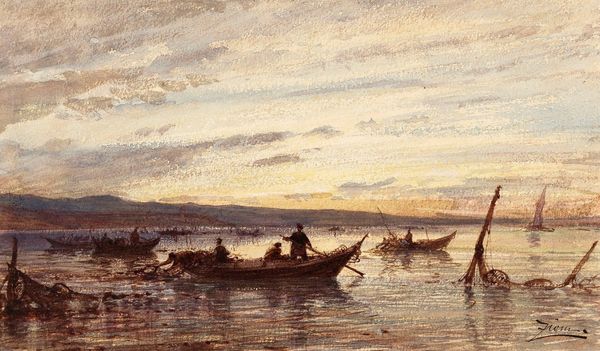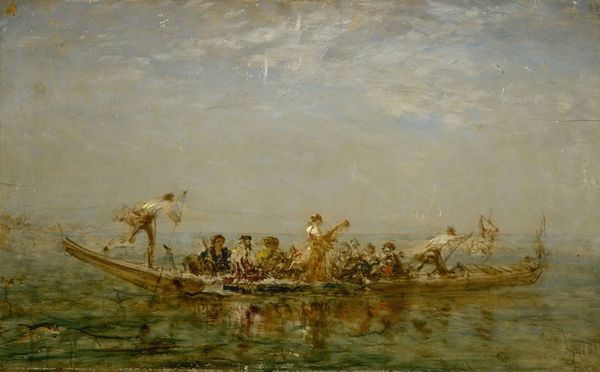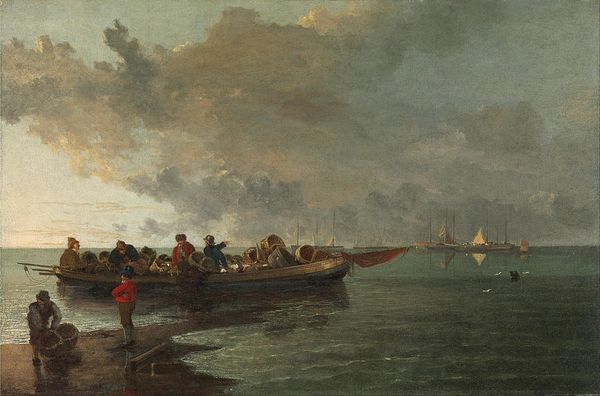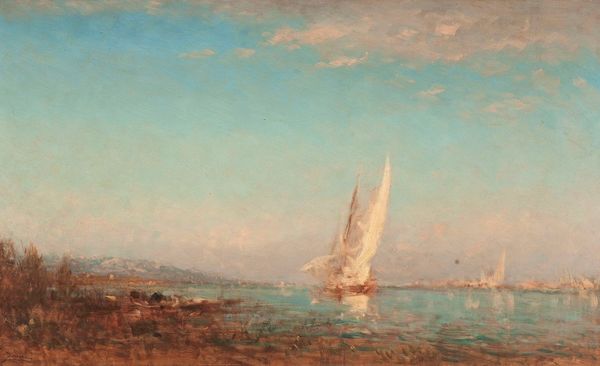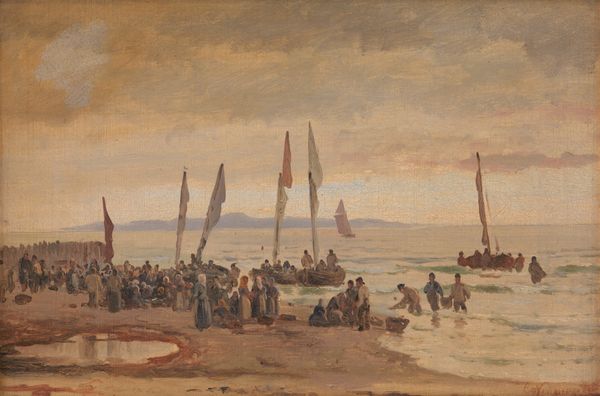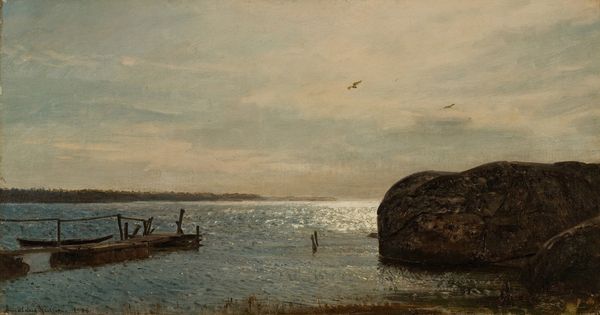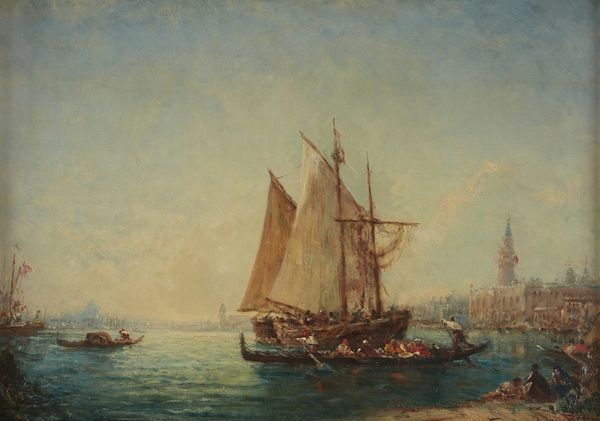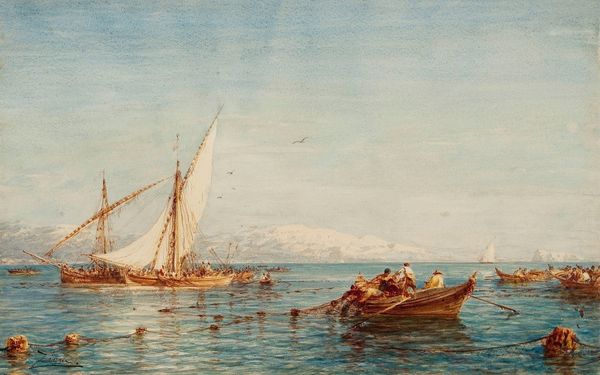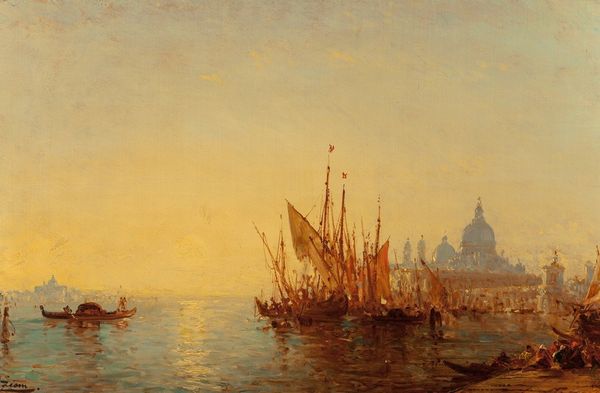
painting, watercolor
#
painting
#
impressionism
#
impressionist painting style
#
landscape
#
impressionist landscape
#
oil painting
#
watercolor
#
genre-painting
#
watercolor
Copyright: Public Domain: Artvee
Curator: Fèlix Ziem’s artwork, Sausset, La Pêche Au Thon—likely meaning “Tuna Fishing near Sausset”—presents us with a busy coastal scene. What captures your eye initially? Editor: The surface itself, it appears Ziem’s handled the paint with a real fluency. Thin layers, perhaps watercolour mixed with something else? It looks almost ephemeral, as if the scene could dissipate with a strong gust of wind. Curator: Ziem was, indeed, adept in both oil and watercolor. He often worked en plein air, rapidly capturing the light and atmosphere. Sausset-les-Pins was, and is, a port near Marseille in France, known for its tuna fishing. The work gives us an insight into the lives and labor of these fishermen. Editor: The small boats overloaded with figures! You can almost feel the precariousness, the inherent risk involved. The weight of bodies, the fish themselves... it's all there in the materiality of the paint – the thinness versus the density in certain areas implying substance. Curator: Exactly. While stylistically aligned with Impressionism, with its loose brushwork and emphasis on light, this work also documents a very specific moment in the social history of the region. The fishing industry and coastal life were central to the Mediterranean economy. This depicts workers participating in local economics of the period. Editor: Absolutely. It makes you think about the role of fishing—its impact, and the kind of knowledge needed for such practices. The network of ropes and nets also indicate the degree of labor behind the act of fishing. Curator: It also reveals much about artistic patronage and audience reception. Ziem's coastal scenes proved popular, appealing to bourgeois sensibilities fascinated by the working lives of maritime communities. A form of romanticizing, perhaps? Editor: I think you're right to identify the potential for romanticism. The light is appealing, but ultimately it is a piece that provides important clues. Ziem draws attention to the often unseen labour behind what ends up on plates for consumption. A reminder of human toil, if you will. Curator: A poignant reminder, certainly, mediated through Ziem's distinctive artistic vision. Thanks for sharing your perspectives. Editor: My pleasure, it's important that these types of industry don't slip under the carpet.
Comments
No comments
Be the first to comment and join the conversation on the ultimate creative platform.
